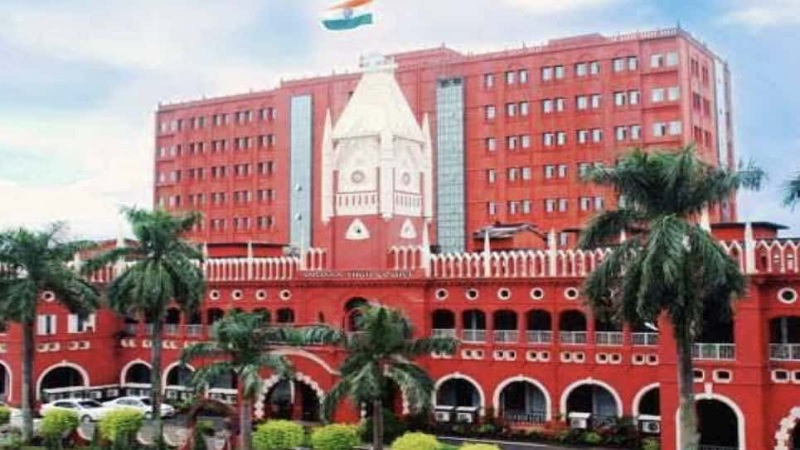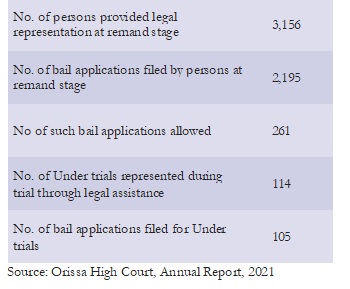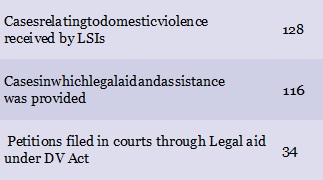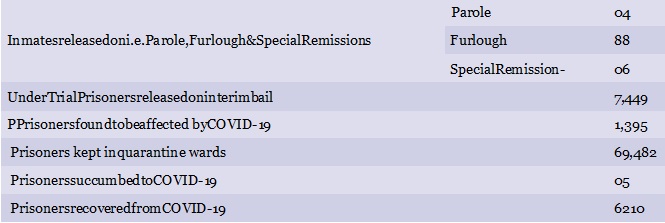
Image Courtesy:indialegallive.com
In a substantial and analytical document, from addressing the digital divide over access to justice, managing the docket explosion, listing important judgments of each of its 18 judges to remembering staff who succumbed to the Covid-19 pandemic the Orissa High Court has brought out a pioneering, 312-page annual report of its own performance in 2021.
Under the stewardship and vision of Chief Justice S Muralidhar who took office on January 4, 2021, the report outlines the performance of the High Court and the district-level judiciary in the state. The project was undertaken by Orissa High Court
“For any institution, introspection is necessary to overcome the drawbacks and to enhance efficiency,” the report stated in a chapter titled ‘Introspection and Challenges’.
By December 31, 2021, a total of 197,119 civil and criminal cases are pending before the High Court and while pendency remains high, even increasing by around 45,500 cases in 2021, disposals too increased by 44,000 cases as opposed to 2020 figures. This when the High Court did not function at full strength and faced other hurdles too because of the pandemic.
The Orissa High Court currently has 21 judges against a sanctioned strength of 33 judges. The report stated that the working strength of judges was only 15 in June 2021 and 13 in October 2021.This is a malaise –vacancies—that affects every tier of the Indian judiciary, caused mainly by the executive’s tardiness in assenting to appointments. Holding these up is a twisted way of exercising executive control. “Still the pendency at the end of the year also substantially increased due to abolition of the Odisha Administrative Tribunal and the resultant transfer of its pendency cases to the High Court,” the report has recorded.
The High Court has also been able to publish separate monthly cause lists for old cases. In 2021, 3457 five-year-old cases, 2522 10-year-old cases, 90 25-year-old cases and 1 40-year-old case were disposed of — 41 more cases older than 40 years are still pending. “Undoubtedly, the greatest challenge to the judiciary is docket explosion i.e. increase in the pendency of cases. While the increase in the institution of cases reflects people’s faith in the judiciary, it also poses challenges,” the report observes.
An interesting chapter on significant judgements that have emerged from the Orissa High Court actually lists 2-3 important judgments by each of the 18 judges of the High Court including one by Chief Justice Muralidhar himself, involving a 15-year-old writ petition and a 7-year-old PIL after receiving a recent report about the death of 5 inmates in Odisha jails. A bench led by Justice Muralidhar has passed orders to systematically trace overcrowding in every jail and sought inputs from citizen’s organisations and researchers.
The report contains a list of exhaustive initiatives to address the digital divide in the judiciary, through which the Orissa High Court had introduced new facilities for lawyers within the court premises.“To help overcome any disadvantage faced by lawyers and litigants on account of the digital divide caused by the lack of access to the ICT devices and therefore to participate in the virtual hearings, the High Court provided video conferencing cabins in its premises. Likewise, in each of the district court VC cabins were provided.” Three courtrooms — of Justices SK Panigrahi, BP Routray and Savitri Ratho — even went paperless ensuring a considerable reduction was seen in use of paper.
Printing of orders and judgments with the watermark of the High Court’s logo and sending High Court orders to subordinate courts digitally has also been introduced through a customized software module called the Order Communication Portal (OCP). “Substantial time gets consumed by the time such orders reach the subordinate Court through post resulting in possible delay in compliance,” the report stated, adding that more than 40,000 orders have been communicated from the High Court to various District and Subordinate Courts across the State through OCP in 2021 since its launch in April that year.
The High Court has also launched “E-Custody certificate system” in November 2021 in coordination with the Home Department, the Prisons Department, the office of the Advocate General and the NIC. “Eventually, E-Custody Certificate System provides comprehensive information of a prisoner such as the identity of a criminal, address, the cases for which he has undergone incarceration, his antecedent and period of sentence undergone,” the report stated. This measure could ensure greater transparency in the treatment of prisoners and under trials within the state’s jails.
The report also paid homage to six employees including copyist Panduram Murmu, peon Sanjeeb Kumar Barik and gardeners Sahadev Behera and Binod Bihari Gochhi who succumbed to Covid.
Legal Aid in Orissa
Odisha has developed a state-wide network of legal services institutions in all 30 districts, reaching out to the under- privileged sections of the society including HIV+ patients, transgenders and victims of disasters, outlined in the annual report. . It has schemes providing representation to the accused in Courts and compensation to the victims of crime. Today, apart from the State Legal Services Authority at State level, there are 30 DLSAs and 105 TLSCs in different outlying court locations.
This focus of promoting legal literacy amongst the masses was continued during 2021, through mega camps for the rural populace, spot films display in mobile vans, radio talks, press coverage, student literacy clubs, YouTube Live awareness camps and online webinars. Legal Awareness camps were organized in different parts of the State. The DLSAs have established Village Legal Aid Clinics and Centres in the rural areas which are operated by para legal volunteers, says the report.
During the year, 1,958 applications under the Victim Compensation Scheme were received by DLSAs across the State. Of these, the report records that 2,023 applications were decided and Rs.20,72,30,331/- was disbursed towards compensation to the beneficiaries by the DLSAs.
Jail Legal Services Clinics
During 2021, 5,698 persons approached the Jail Legal Services Clinics. Of these, 2,556 persons were provided with assistance.



The following table depicts the steps taken to provide legal services authorities during the pandemic.

Source: Orissa High Court, Annual Report, 2021
HPC related Statistics

Source: Orissa High Court, Annual Report, 2021
Help to stranded persons and Senior Citizens

Source: Orissa High Court, Annual Report, 2021
Communications between the Chief Justice, Orissa and District Judges
Extremely interesting annexures to this first ever exercise by the Orissa judiciary contain several letters through 2021 addressed by the CJI, Orissa to District Judges. These letters are extremely motivational dealing with crucial aspects of access to justice and legal aid, technology efficiency within courts etc.
Chief Justice Muralidhar
The CJI Orissa, Muralidhar comes with a formidable background. His 2004 treatise of legal aid, Law Poverty and Legal Aid—Criminal Justice is a must read for any legal professional. The book has a foreword by that doyen of the Indian judiciary, Justice VR Krishna Iyer.
With an illustrious career in the courts, on the Bar and Bench, Justice Muralidhar was unceremoniously shunted out of the Delhi High Court after a path-breaking mid-night hearing around hate speech during the Delhi violence of 2020. He was transferred to the Punjab & Haryana High Court before becoming CJI, Orissa. The timing of his transfer was more than curious, and followed fast on the heels of his orders on hate speech from elected officials from the ruling dispensation. Justice Murlidhar convened an emergency hearing at his home along with Justice Bhambhani, when pleas to help ambulances safe passage to and from the Al Hind Hospital in Mustafabad area failed to elicit any response from the Delhi Police. AN order was passed past post-midnight by that directed police to provide protection to ambulances so that critically injured people could be taken out of the Al Hind Hospital and be taken to other medical facilities where they could get the more specialized care they required. Then, the next day, it was Justice S Murlidhar who ensured that a video showing controversial BJP leader Kapil Mishra issuing a chilling ultimatum to the Delhi Police to evict anti-Citizenship Amendment Act (CAA) protesters from near the Jafrabad metro station, was played before the Solicitor General Tushar Mehta as well as the police officer present in court. Murlidhar was hearing a petition seeking directions to the police to file and FIR against Mishra for using hate speech to incite violence. During this hearing he had also allowed for other videos of hate offenders such as Anurag Thakur, Parvesh Verma and Abhay Verma to be played before the court. He had also upbraided the Solicitor General for his remark that FIRs will be filed at an “appropriate time” wondering aloud if the moment wasn’t now. No wonder then he had been unceremoniously shifted away from this jurisdiction.
In his concluding words in the Orissa High Court’s annual report, Chief Justice S Muralidhar has urged his colleagues to read “an excellent piece titled ‘How to be a Good Judge — Advice to New Judges’ by Mr Justice RV Raveendran, Former Judge, Supreme Court of India.” “I find it useful to go back to it every now and then for guidance. I request you to circulate a copy thereof, by e-mail, to all judicial officers in your judgeship,” he wrote.
The Committee for the preparation of the annual report includes Justice K.R. Mohapatra, Justice B.P. Routray and Justice Sashikanta Mishra. The Sub- Committee for the collection, collation and synchronization of data included Gourishankar Satapathy, Member Secretary, O.S.L.S.A Pravakar Ganthia, Registrar (Inspection), Suman Kumar Mishra, Registrar (Judicial) Sukumar Mohapatra, Additional Co-ordinator and the Sub- Committee for editing, designing and printing included Bidyut Kumar Mishra, District Judge, Cuttack Soumyak Patra, Co-ordinator, Arbitration Centre Anupam Patra, Central Project Co-ordinator and Chhayakanta Dash, Special Officer (Special Cell).
The entire report may be read here:
Related:
Legal services, access to justice for all
Free legal aid does not mean poor legal aid: Justice UU Lalit